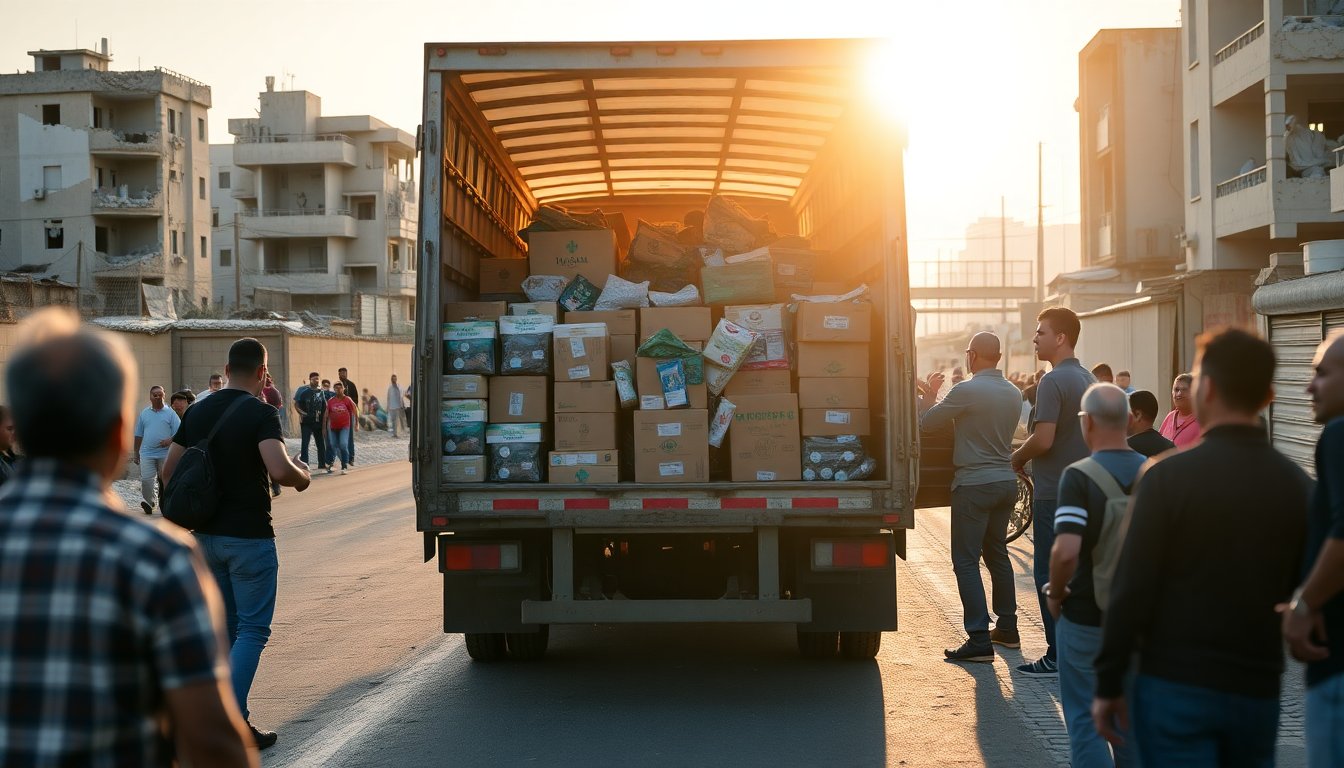Table of Contents
The ongoing humanitarian crisis in Gaza has prompted a significant shift in the role of international actors, particularly the United States. The U.S. is enhancing its involvement in delivering aid to Gaza, which diminishes Israel’s authority over the humanitarian relief entering the region.
This change occurs at a critical time as a tenuous ceasefire holds amidst the aftermath of intense conflict.
Since the ceasefire was established, there has been a gradual release of hostages’ remains by Hamas. The complexities surrounding this issue highlight the underlying tensions and the need for a comprehensive resolution.
The U.S. aims to coordinate a multifaceted approach to aid distribution while navigating the delicate dynamics between Israel and Hamas.
Hostage remains returned amid ongoing tensions
Israel recently confirmed the return of remains belonging to three hostages from Gaza, recovered from a tunnel.
This handover is part of a larger context in which, since the ceasefire commenced on October 10, a total of 17 remains have been released, with 11 still unaccounted for. The process has been slow, with families expressing frustration over the pace of these exchanges.
Family anguish and community response
The emotional toll on families has been profound, resulting in public demonstrations calling for action and compassion. During a rally, a friend of a deceased hostage remarked on the tragedy of the ongoing conflict, urging for restraint and understanding from all sides.
This sentiment echoes a widespread desire for peace and reconciliation in a region marred by conflict.
The exchange of remains has not only been a matter of humanitarian concern but also a critical aspect of the U.S.-mediated ceasefire.
The plan, which consists of 20 key points, includes the establishment of an international stabilization force to secure Gaza’s borders and enforce the ceasefire agreement. Countries are showing interest in participating in this initiative, contingent upon clear mandates from the U.N. Security Council.
Challenges of governance and humanitarian aid
As discussions continue regarding the future of Gaza, several pressing issues remain unresolved. The disarmament of Hamas and the governance model for a post-conflict Gaza are central to the peace process. Prime Minister Netanyahu has emphasized the ongoing presence of Hamas in the region, declaring intentions to eliminate any remaining threats.
Statistics regarding the casualties from the conflict illustrate the devastating impact of hostilities. Reports indicate over 68,600 Palestinian deaths since the outbreak of violence. However, these figures remain contested, with varying accounts complicating the narrative.
Urgent need for humanitarian relief
The humanitarian situation in Gaza is dire. Reports indicate that food supplies are beginning to stabilize, yet the need for adequate resources remains critical. The United Nations has initiated a campaign aimed at immunization, nutrition, and health monitoring for children, targeting 44,000 vulnerable youths in the region. This effort underscores the importance of addressing the immediate needs of the population while laying the groundwork for a sustainable recovery.
Despite the gradual improvement in food access reported by the U.N. Office for the Coordination of Humanitarian Affairs (OCHA), many challenges persist. Ongoing efforts to deliver aid are hampered by extensive destruction of infrastructure and the complexities of operating in a war-torn environment.
Looking ahead: The road to stability
As the international community observes developments in Gaza, the path forward is fraught with challenges and uncertainties. The U.S.’s increased role in aiding Gaza reflects a broader commitment to stabilizing the region. However, achieving lasting peace will require collaboration and compromise from all parties involved.
Since the ceasefire was established, there has been a gradual release of hostages’ remains by Hamas. The complexities surrounding this issue highlight the underlying tensions and the need for a comprehensive resolution. The U.S. aims to coordinate a multifaceted approach to aid distribution while navigating the delicate dynamics between Israel and Hamas.0





